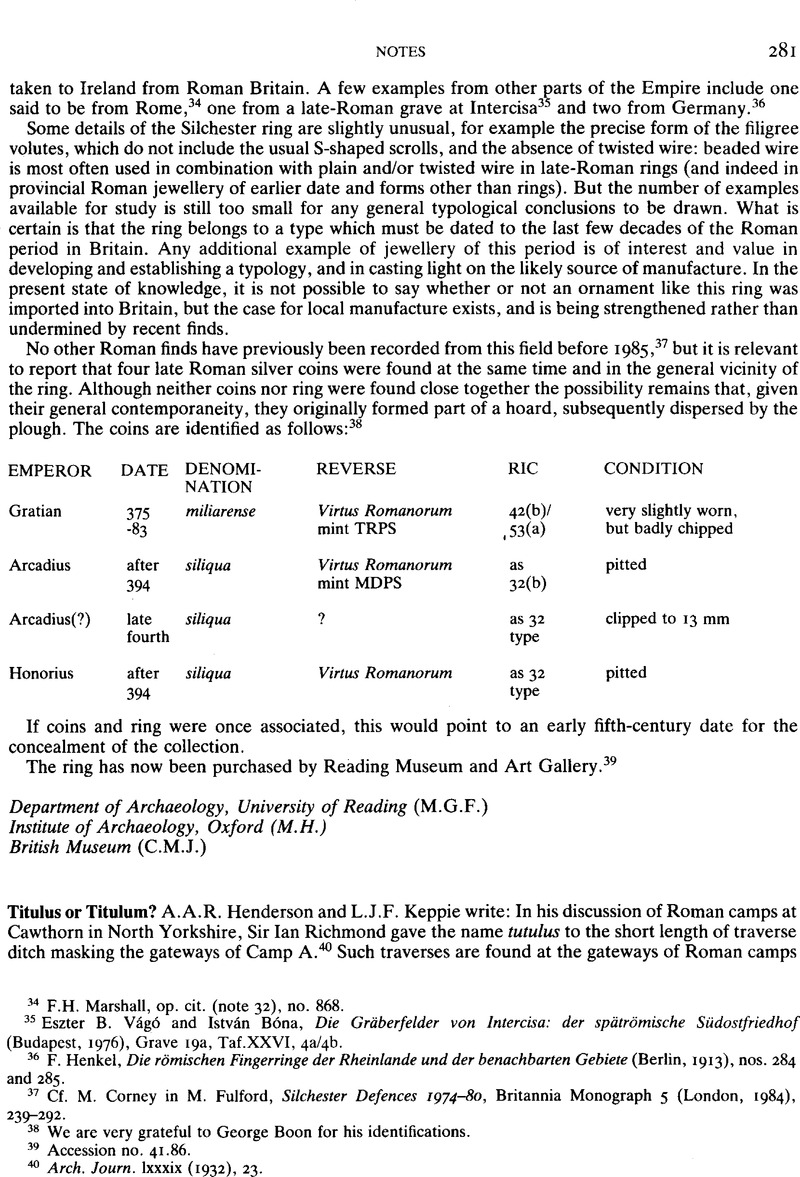Article contents
Titulus or Titulum?
Published online by Cambridge University Press: 09 November 2011
Abstract

- Type
- Notes
- Information
- Copyright
- Copyright © A.A.R. Henderson and L.J.F. Keppie 1987. Exclusive Licence to Publish: The Society for the Promotion of Roman Studies
References
40 Arch. Journ. lxxxix (1932), 23.
41 Schulten, A., Numantia: die Ergebnisse der Ausgrabungen 1905–1919 (München, 1914–1931)Google Scholar Band IV. pl. 1: Keppie, L., The Making of the Roman Army (London, 1984)Google Scholar, fig. 12.
42 Oxford Latin Dictionary (Oxford, 1982), p. 1997, s.v.
43 ‘A Note on Titulum’, Arch. Cambr. cxviii (1969), 133–34.
44 Gemoll, W., Liber de Munitionibus Castrorum. Teubner text, (Leipzig, 1879)Google Scholar; Grillone, A., Hygini qui dicitur de metatione castrorum liber Teubner (Leipzig, 1977)Google Scholar; Lenoir, M., Pseudo-Hyginus des fortifications du camp Coll. Bude (Paris, 1979).Google Scholar
45 i.e. ‘a holy place’; Cf. Digest i.8.9 {sanctum est quod ab iniuria hominum defensum atque munitum est); ibid. i.8.1 (sanctae res, veluti muri et portae).
46 Schele, R.H., Hygini Gromatici et Polybii Megalopolitani de castris Romanis quaeexstant….(Amsterdam, 1660).Google Scholar
47 op. cit. (note 44), 82.
48 The codex Arcerianus is illustrated in Lowe, E.A., Codices Latini Antiquiores (Oxford, 1934–1966), 9, 1374b.Google Scholar The text occupies fol. 126vb line 15 to fol. 137va, line 13. On the date of Hyginus, a question which does not directly concern us here, see Frere, S.S., Britannia xi (1980), 52fr.Google Scholar; Birley, E.B. in Wirth, G. (ed.), Romanitas-Christianitas: Untersuchungen zur Geschichte und Literatur der römischen Kaizerzeit (Berlin, 1982), 277–82.Google Scholar
49 For example, Ch. 49 securioris causae disciplinete for securiori causa disciplinae (corr. Schele), 50 causae instmctionis for causa instructions (corr. Schele), 54 latitudines operis for latitudinem operis (corr. Schele), 57 fluminis torrentis for fluminis torrentes (corr. B, a late MS descended from A).
50 CIL x 2487.
51 Glossaria Latina, ed. W.M. Lindsay, J.F. Mountford and J. Whatmough, Collection Budé (Paris, 1926), vol. 1 (Ansileubi), vol. 2 (Arma. Abavus, etc.).
52 De Verborum Significatu, ed. Lindsay, W.M., Teubner (Leipzig, 1913), 503.Google Scholar
53 When this particular meaning originated could not be ascertained by the authors; it may well not be antique, but a Humanist invention.
- 1
- Cited by


